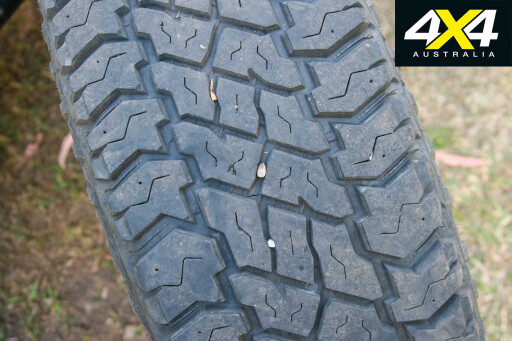
THE COOPER S/T MAXX rubber on my Troopy has (unfortunately) seen more bitumen than dirt roads of late. Tackling the 800km return trip from home to Sydney on a monthly basis, combined with tripping into town to front the school principal every time one of my boys gets into strife, is certainly not what either the Troopy or the aggressive all-terrain rubber is best at.
Hopefully my boys’ enthusiasm for camping and exploring our local bushlands help to clarify that we are indeed using the big, boofy 4x4 responsibly and not just slashing about the mud for the fun of it.
 Cooper claims these relatively aggressive all-terrains are to be used 50/50 on road/sand and dirt/mud, and they’ve handled everything with ease to date; plus, I’ve had zero punctures and only slight chipping, both to be expected considering the gnarly tracks we tackle.
Cooper claims these relatively aggressive all-terrains are to be used 50/50 on road/sand and dirt/mud, and they’ve handled everything with ease to date; plus, I’ve had zero punctures and only slight chipping, both to be expected considering the gnarly tracks we tackle.
However, they aren’t the quietest all-terrains on the market. While they certainly don’t emit muddie-type drones, they are louder than most road-oriented rubber. Keep in mind that a Troopcarrier doesn’t have the best sound-deadening characteristics, so plenty of road noise will infiltrate the cabin compared to something like a 200 Series.
To increase sidewall strength the Coopers feature extra plies and the latest Armor-Tek technology, while a fancy new chemically bonded silica tread compound improves grip and longevity. Remember, the larger the gaps in the tread (the voids) the larger the rocks or stones the tyre will pick up and toss out.
On-road grip in the dry is fine, but wet-weather grip isn’t the best. Perhaps the silica and natural rubber compound mixture could have an extra squirt of ‘sticky’ thrown in. They aren’t terrible, they’re just not as good as a dedicated on-road 4x4 tyre.
Given the 70 Series’ mismatched wheel tracks front to rear, I fitted 25mm offset rims to the rear (making it 50mm wider than the standard rear end) to partially correct the Toyota-designed mismatch.

Combined with the wider-than-standard tyre width, to help overlap the front tyre tracks with the rears, this has resulted in far less negative effect in sand. The problem is when I rotate my tyres (which I don’t do often enough) I can only swap from left to right, not front to rear.
The downside to this is the power-driven rear tyres are wearing faster than the front tyres, especially as the tyres age. To put it in context: with 40,000km of wear my front and rears both measured 10mm (there was 15mm from new or 14.7mm quoted by Coopers). After 50,000km my fronts are 9mm (not bad) while the rears are down to 6mm.
I could remove the rubber from the rims to help with rotations, but that ain’t going to happen. Perhaps the faster wear is related to the timing – I chipped and upgraded the exhaust on the Troopy for more power, and the extra acceleration might be causing minor increases in wear rates. Or perhaps it’s derived from towing a caravan over a few thousand-kilometre trips. I’m clutching at straws here and can’t really prove what has happened.
Would I go another set? Without wanting to lose the off-road ability or tough looks, I’m happy with the on-road handling of the big bus. So I’d have to say yes to putting on another set.

COMMENTS